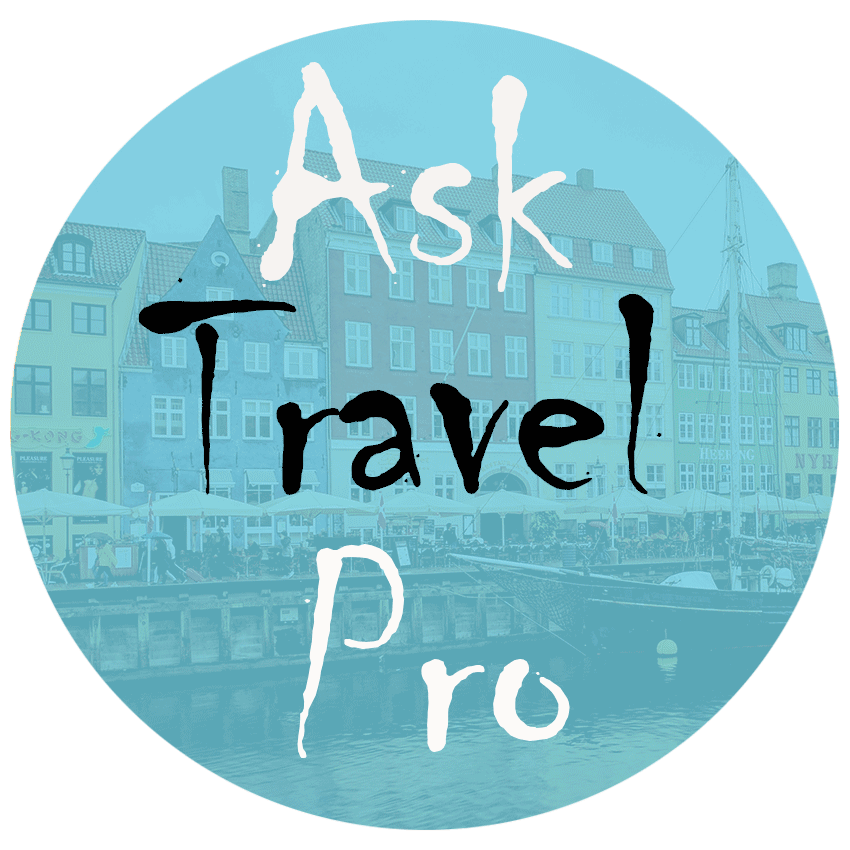Hunting for airplane tickets and how to get comfortable during the flight.
Getting ready for vacations abroad? Then welcome to the tribe of ticket hunters!
I am currently based in California, US, so my international travel tips will cover the situation when you travel from the US and back.
Shopping for air tickets can be very tricky, because air carriers come up every year with new strategies for maximizing their profits. It is difficult to outsmart them, but there are few tricks out there to help you minimize your expenses.
Tip #1
When you search flights either with big hubs like Expedia or Travelocity (which, I believe, are under the same ownership now, as they have an identical website design and prices) or directly on the carrier’s website, always look for the final price rather than for the advertised “starting from...”. For example you search for a roundtrip flight from San Francisco to London. The cheapest price you see is a tempting $500. After you choose a departure flight you will be prompted to choose a return flight. Now you will see several options for a return flight. One or two of them might be marked as +$0. Most likely they would be less convenient, less desirable options. Either you will have to spend the night somewhere between connecting flights, or the departure time is something like 4 am – which means a sleepless night and an expensive taxi ride to the airport. So if you still want to buy these tickets, be sure to add up the expenses for additional hotel stay and/or taxi fare.
You can also choose a more convenient return flight, but be prepared to pay at least one or two hundred dollars more.
Also, Expedia may play a dirty game: you see a flight for $500, add it to the shopping cart and see a whopping $900 with the explanation “The price for this flight has changed” and a suggestion to book this flight right now “to lock this low price”. That happened to me a few times, and I ended up booking the same flight through the airline’s website for lower price.
Another magic trick might happen: you need to buy, say, three tickets. You assume that three $500 tickets will cost you $1500. But at the checkout you might see a sum of $1900 or $2200. How can this be? I do not know. Apparently, in their world the laws of math are somewhat different... So watch out for the final price!
Always compare a few different sources: sometimes you will get a better price for the same flight on a big hub while other times a direct purchase from the carrier’s website will cost less. And keep in mind that the same flight might be sold by 5, 6 or even more air carriers for different prices.
My most frequently used resources:
www.google.com/flights - I love their price calendar!
Tip #2
Look carefully at what is included into the price and whether there are any hidden fees. Sadly, the times when you could be sure that you can take on an international flight one 50 pound checked bag for free are long gone. On-board meals are slowly going the same direction...
If you plan to take checked luggage on the trip, read the small print luggage policy. It differs from one carrier to another. The sky's the limit! I've seen the first checked baggage fee cost as “low” as $50, oftentimes closer to $60-100, and beware of Norwegian Airlines! They are at the top of the cheapest flights now, but one checked bag might cost you anywhere from 70 to 230 dollars. They sometimes do not specify how they will calculate the bag fee, so it is better to try to call and ask exact quote.
Also, with the cheapest option you cannot choose seats at the time of purchase. It costs an additional $35-70 per ticket. If you want to avoid that fee - go for an online check-in 24 hours before departure and choose seats for free. Most likely you will be given a very limited choice at the rear part of the aircraft, but at least your family will sit together.
More about plane ticket hunting:
Be open to various possibilities. Maps and math are your friends! Always check nearby airports and be prepared to build your own route instead of just following what is offered. For example: last summer I was planning our family trip to Split, Croatia. Every search for tickets from San Francisco to Split would come up with $1200 as the lowest possible price for one ticket. And we needed four tickets! I studied a map of Europe and checked flights to nearby countries and possible ways of getting to Split from there. There were some interesting finds: a roundtrip flight from San Francisco to Rome, Italy, was available for $512, and a roundtrip flight from Rome to Split for another $148. The sum of these two flights is almost 50% less than what was offered by a direct flight search, which was a connection flight anyway. We decided to spend one full day in Rome, and even staying two nights in an hotel we saved a lot. Plus, we had the ability to see Rome, isn’t that nice?
Tip#3.
Onboard meals.
On domestic flights no free meals are served. So if your international flight includes a domestic leg, take some tasty fresh food with you. Most likely you will get hungry during a 6-hour flight from San Francisco to NYC or Atlanta hubs.
Tip# 4
Coming back to the US.
Food in Europe is delicious. Exotic fruits in South America are ripe and juicy. It is quite tempting to bring some tasty treats back home to share with family and friends. To avoid disappointment or more serious troubles, please check the list of foods forbidden to enter the US before you pack them. As of now, you cannot bring any fruit, vegetables or meat products into the US. The list is somewhat longer, please check it every time before travelling, as some food items may be added to it! If you get caught with an innocent Parisian apple, the border control officer may either ask you to throw it into the trash can or fine you for a few hundred dollars and you never know what he or she will choose. Play it safe! For more detailed info, visit help.cbp.gov
Tip #5
Comfort on board
The time zone difference between Europe and California is 9 hours. If you are flying from the East Coast, it is 6 hours - still quite a lot. So jet lag is almost inevitable. But there is a trick that helps to cope with time change: sleep in the airplane as much as you can. Easier said than done, huh? Yes, falling asleep and, more importantly, staying asleep while cramped into a narrow seat with almost no recline and roaring engines nearby seems to be no easy task. But there is certainly something that can be done to take away at least some discomfort.
Here are few little travel hacks for the economy class traveler.
If you've got a red-eye flight
"No-jet-lag" pills are of huge help. These little homeopathic pills are quite inexpensive and one package will last for two to three overseas flights for one person. They are to be taken every couple of hours (skip the dose if you are asleep) and make "Sleepless in Seattle" "Sleeping Peacefully on the Flight From Seattle to Amsterdam".
Buy it on Amazon Buy it in REI co-op
Dealing with noise
Noise cancelling earphones work well for many people. However there are few downsides: They are quite expensive, oftentimes bulky and thus interfere with neck pillows, so most of the time you can only wear either earphones or a pillow. For this there is a smart solution: get a package of soft foam earplugs from any drugstore or on Amazon. Before leaving the house, grab a dozen or earplugs, cut off about a third or quarter of their length, so when inserted into the ear they do not stick out too far. This way you can sleep in a fairly quiet environment while using a neck pillow without any discomfort. [Buy it on Amazon]
Dealing with light
Wear an eye mask when sleeping on an airplane. Even though the cabin crew usually make an "artificial night" onboard for better adjustment to the time difference, there will still be some people next to your seat that will be reading with their lights on or watching a movie. Eye masks are sold literally everywhere. When choosing, keep in mind: the softer - the better. My favorite: Mavogel Cotton Sleep Eye Mask
Dealing with dry air
The air circulating inside an aircraft is very dry. Pack a small bottle of saline drops in the handbag and use it every couple of hours. Your nose will thank you by the time you get off the plane! If you have a tendency for dry eyes, pack some eye lubricating drops (artificial tears).
Dealing with the lower legs swelling
Sitting in a chair for 10+ hours oftentimes result in poor circulation and can lead to your feet swelling. I deal with it by using a portable leg supporter. I accidentally ran into this while browsing the web and decided to give it a try. It really helps to get into a more comfortable position, facilitates better sleep and reduces swelling by the end of the flight.
Optimizing handbag
What I have in my handbag (or should I call it under seat bag?) during the flight:
-wallet
- e-reader with a good book supply
- smartphone or iPod with a good supply of audio books - when my eyes are tired from reading but I still am not sleepy, I enjoy listening to podcasts or audio books.
- Power bank - some aircraft still do not have electrical outlets.
- Earphones - I prefer to use my own, because the ones that are distributed during the flight do not fit my ears well. And I like the noise cancellation feature, too. My favorites: Bose Quiet Comfort [Buy it on Amazon for $250] and Mpow H5 Active Noise Cancelling Headphones [Buy it on Amazon for $44]
- Pack of facial tissues
- Pen. It is needed to fill out custom forms!
- Eye mask
- Ear plugs
- Neck pillow (sometimes I just use rolled sweater)
- Portable foot hammock
- No-Jet-Lag pills
- Headache remedy
- Eye and nose saline drops
- Little flashlight. Before I got the idea to carry one around in my purse, every attempt to find my stuff in the darkness drove me crazy! All those little things magically disappearing when I needed them... Now that I have a portable light, they cannot hide from me anymore! [Buy it on Amazon]

